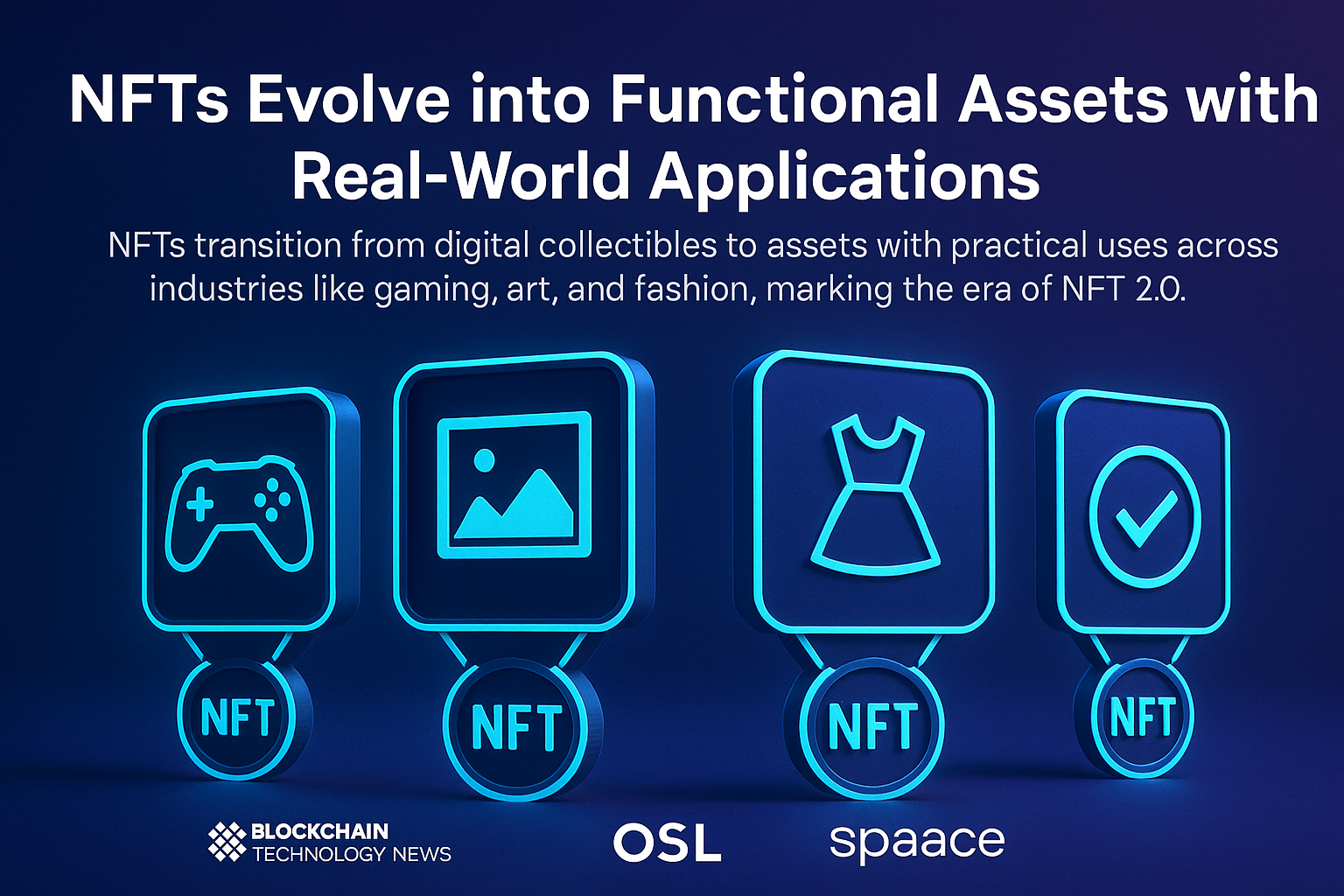Once synonymous with pixelated art and overpriced digital collectibles, NFTs are now entering a new phase—NFT 2.0. This evolution represents a significant transformation as non-fungible tokens expand from simple digital ownership certificates to powerful tools with tangible utility across multiple industries.
From Hype to Utility
In the early days, NFTs made headlines for multimillion-dollar art sales and celebrity-backed projects. But critics were quick to label the trend as a speculative bubble. Now, the narrative is shifting. According to reports from Blockchain Technology News and industry leaders like OSL and Spaace, NFTs are being reimagined as functional assets—integrated into systems that go far beyond art speculation.
Gaming: NFTs as In-Game Assets
In the gaming world, NFTs are being used to represent in-game assets like characters, weapons, and skins—items that players can truly own, trade, or even transfer between games. This creates a decentralized gaming economy where users are no longer at the mercy of publishers or locked into a single platform.
Art: Beyond Ownership, Into Licensing
For digital artists, NFTs now offer more than proof of authenticity. They’re being integrated with licensing contracts, revenue-sharing models, and automated royalty systems. This empowers creators to earn every time their work changes hands, even years after the initial sale.
Fashion: Wearables and Digital Identity
Luxury brands are adopting NFTs to authenticate physical items and provide exclusive digital wearables for the metaverse. Imagine purchasing a high-end handbag and receiving a matching NFT that can be worn by your avatar in digital worlds—complete with proof of authenticity on the blockchain.
The Era of NFT 2.0
The term “NFT 2.0” captures this broader transformation. It signals a shift from hype to infrastructure—where NFTs become foundational building blocks for digital ownership, smart contracts, and interoperability across platforms.
We’re witnessing a move from art galleries to gaming engines, from profile pictures to supply chains. NFTs are becoming tools, not just trophies.
As regulatory clarity increases and platforms mature, we can expect NFTs to play an even larger role in sectors like real estate, education, and healthcare—where secure digital identity, ownership, and provenance are essential.
NFTs are no longer just quirky collectibles. They are evolving into practical, interoperable, and indispensable tools for the digital age. Whether it’s through immersive gaming, decentralized commerce, or digital fashion, the NFT revolution is only just beginning. Welcome to NFT 2.0.




